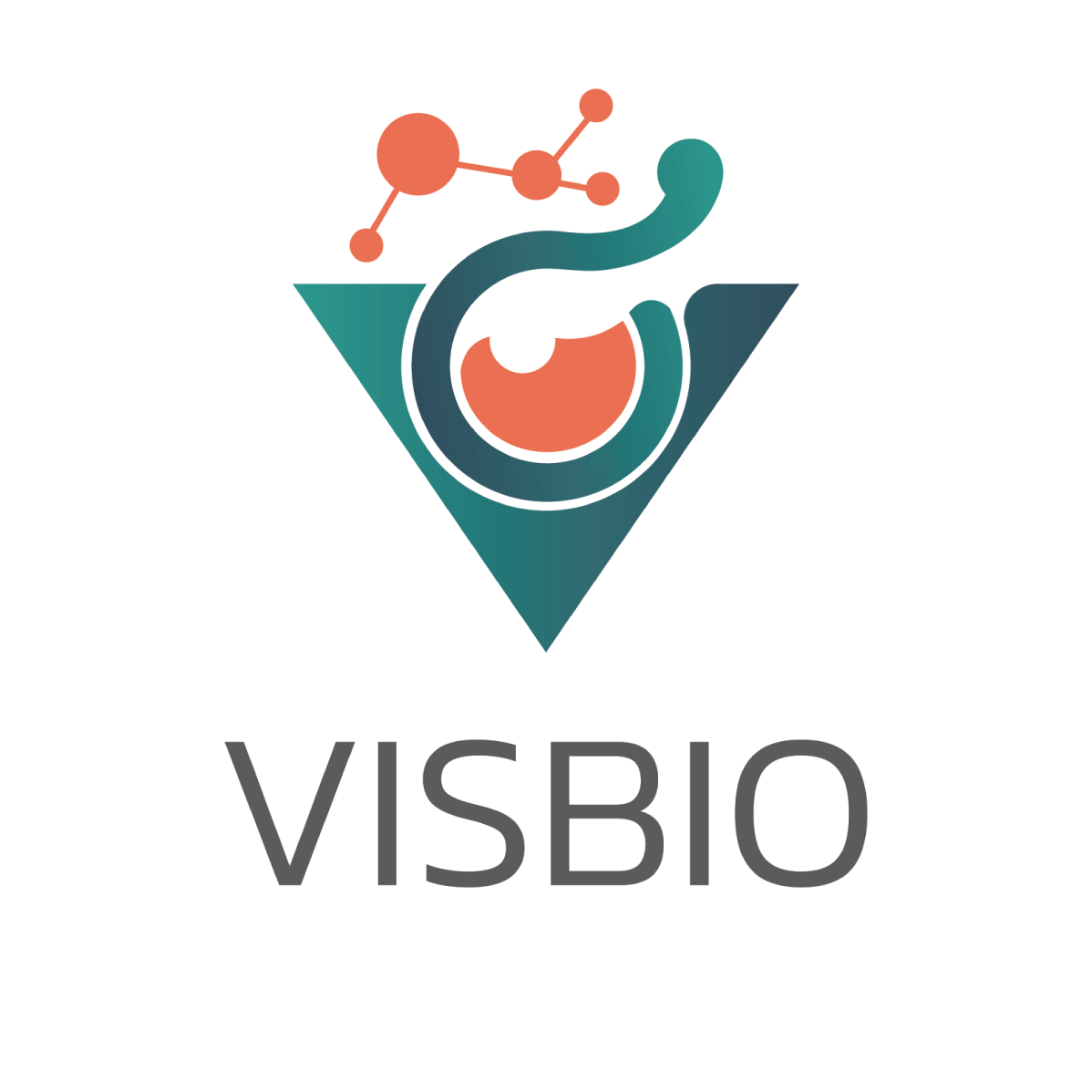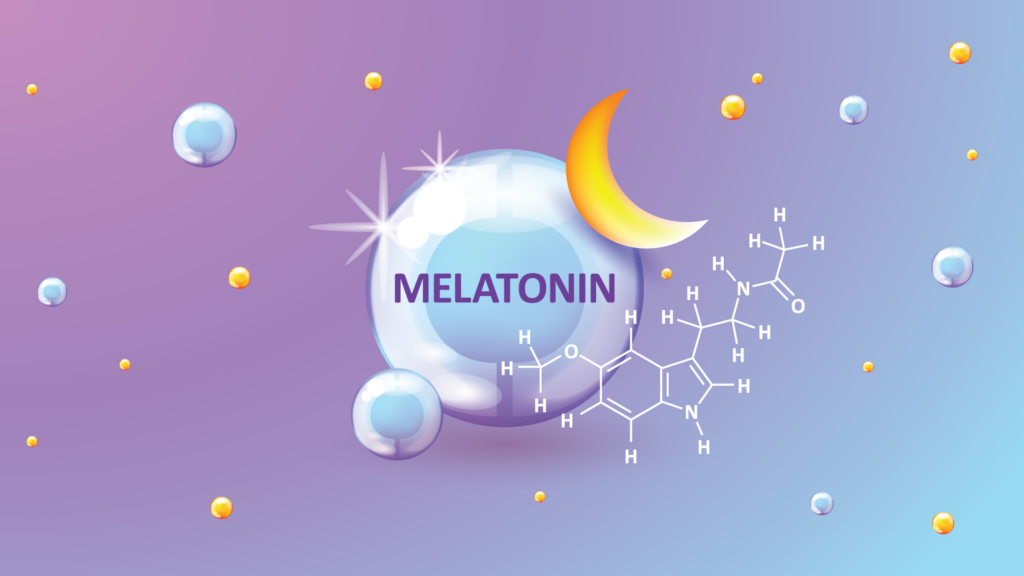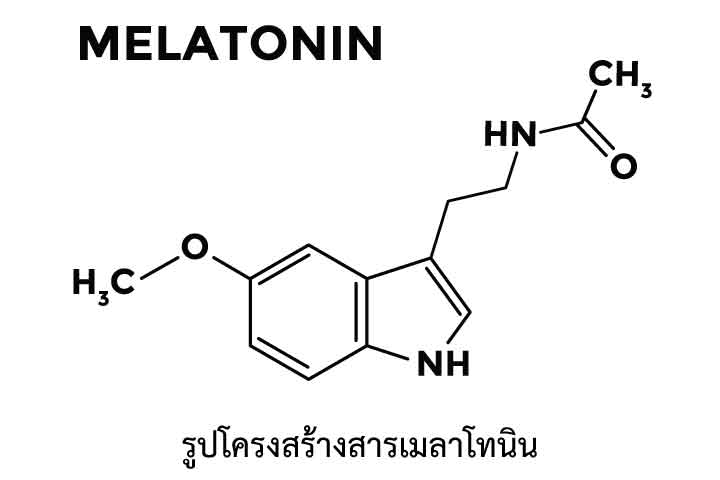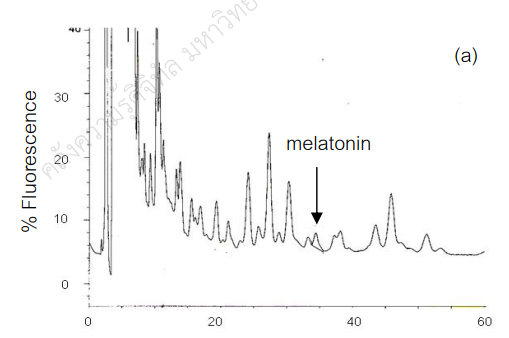
Service Information: Melatonin Quantitative Analysis Testing using HPLC Technique
VISBIO provides a service for the examination and quantitative analysis of the biological component (Biomarker) of the substance Melatonin in all health and beauty industry products. Melatonin, scientifically known as N-acetyl-5-methoxy-tryptamine, is a type of Indoleamine compound and is a hormone produced by the body’s pineal gland, a small endocrine gland. Melatonin is synthesized from the precursor amino acid Tryptophan. Melatonin helps regulate sleep patterns and is suitable for individuals with sleep problems, difficulty falling asleep, shift work sleep disorder, or those needing to regulate their body’s circadian rhythm. Additionally, it has antioxidant properties, anti-inflammatory effects, and aids in boosting the body’s immune system.
The company offers the capability to analyze Melatonin content in vegetables, fruits, herbs, or dietary supplements using the High-Performance Liquid Chromatography (HPLC) technique.
Introducing Melatonin
Melatonin, scientifically known as N-acetyl-5-methoxy-tryptamine, is a type of Indoleamine compound. It is a hormone produced by the body’s pineal gland, a small gland that lacks a duct and is situated in the brain. The precursor to melatonin is the amino acid Tryptophan. Melatonin plays a role in inducing sleepiness, but if melatonin secretion is low, it can lead to difficulty falling asleep. The body releases melatonin primarily during the night.
The highest levels of melatonin secretion occur around 02:00 to 04:00 AM and gradually decrease until it stops around 7:00 to 8:00 AM. Darkness stimulates melatonin secretion, while light inhibits it. Recent studies have found that blue light from mobile phone screens can delay melatonin secretion. In the elderly, there’s a tendency for melatonin secretion to decrease, leading to increased difficulty in falling asleep.
In medical applications, melatonin is available in dietary supplements or as medication in forms like tablets, capsules, or sublingual formulations. It can make falling asleep easier and is suitable for individuals with sleep issues not stemming from psychological conditions, such as insomnia, difficulty falling asleep, and circadian rhythm disturbances caused by shift work. Melatonin can also help regulate the body’s biological clock and mitigate jet lag during long international travels. Additionally, melatonin has other effects on the body, such as being an antioxidant, anti-inflammatory, and immune system booster.
In Thailand, melatonin is registered as a controlled medication and can only be sold in pharmacies or dispensed by a physician’s prescription. Generally, melatonin is relatively safe when used according to label instructions or medical recommendations, although side effects like drowsiness and headaches can occur. It’s advised to avoid activities with high risks, like driving, when taking melatonin. Caution should also be exercised when using melatonin in patients with allergies, epilepsy, liver and kidney issues, pregnant or breastfeeding women.
Analysis of Melatonin by HPLC Technique
Currently, there is a growing body of research focused on analyzing the quantity and pharmacological effects of melatonin derived from various medicinal plants. This is due to the presence of melatonin in plants, vegetables, fruits, and certain herbs. Examples of such herbs include Chinese kale, onions, red onions, lemongrass, cherry, almond, rice, watermelon, tomatoes, basil leaves, and mulberries. Among the commonly used and relatively straightforward methods for quantifying melatonin is the High Performance Liquid Chromatography (HPLC) technique. HPLC is employed to analyze and separate desired substances from a mixed sample in liquid form. The recorded signals typically exhibit peaks, forming a chromatogram, which can be utilized to analyze the type and quantity of the desired substances.
Example of Melatonin Analysis Report Using HPLC Technique
Figure depicting the chromatogram of melatonin analysis from mulberry extract using HPLC technique.
Literature:
- บทความสุขภาพ เมลาโทนิน ช่วยให้นอนหลับได้จริงหรือ?, โรงพยาบาลศิริราช ปิยะมหาราชการุณย์
- https://www.siphhospital.com/th/news/article/share/melatonin
- บทความเผยแพร่ความรู้สู่ประชาชน เมลาโทนิน ตัวช่วยนอนหลับยอดฮิต, คณะเภสัชศาสตร์ มหาวิทยาลัยมหิดล https://pharmacy.mahidol.ac.th/th/knowledge/article/520/%E0%B9%80%E0%B8%A1%E0%B8%A5%E0%B8%B2%E0%B9%82%E0%B8%97%E0%B8%99%E0%B8%B4%E0%B8%99/
- กรนิกา ยานการ , อารยา องค์เอี่ยม , พงศ์ธารา วิจิตเวชไพศาล, เมลาโทนินเหมาะสมหรือยังที่จะนำมาใช้ในวิสัญญี, วิสัญญีสาร 2562; 45(2).
- วริยา โฮชิน, อนุชิตา มุ่งงาม, เมลาโทนินและฤทธิ์การต้านอนุมูลอิสระในผักจากท้องถิ่น, แก่นเกษตร 45 ฉบับพิเศษ 1 : (2560).
- พิชญา โพธินุช, ศศิธร ตรงจิตภักดี, การสกัดและวิเคราะห์เมลาโทนินในสมุนไพรไทย, เรื่องเต็มการประชุมทางวิชาการของมหาวิทยาลัยเกษตรศาสตร์ ครั้งที่ 48: สาขาอุตสาหกรรมเกษตร. กรุงเทพฯ. 2553. หน้า 562-569.
- ปัญญดา ปัญญาทิพย์, ปิยะสดุา โทสวนจิตร, สุธาสินี ทัพพสารพงศ์, ปราโมทย์ มหคุณากร, เพลินทิพย์ ภูทองกิ่ง, บรรลือ สังข์ทอง, การวิเคราะห์ปริมาณเมลาโทนินและศึกษาฤทธิ์ทางเภสัชวิทยาของสารสกัดจากใบหม่อน, การประชุมวิชาการและนำเสนอผลงานระดับชาติ The 5 th Annual Northeast Pharmacy Research Conference of 2013.
- Chanchal Bhati , Neha Minocha, Deepika Purohit, Sunil Kumar, Manish Makhija, Sapna Saini, Deepak Kaushik and Parijat Pandey, High Performance Liquid Chromatography: Recent Patents and Advancement Biomedical & Pharmacology Journal, June 2022, Vol. 15(2), p. 729-746.
- Lin, Jian & Zhang, Chunchan & Gao, Yaoxiang & Zhao, Xiaojun & Li, Xican. (2012). A Validated HPLC Method for Determining Melatonin in Capsule Dosage Form. Spatula DD – Peer Reviewed Journal on Complementary Medicine and Drug Discovery, January 2012; 2(3):147.
- Manchester, L.C., D.X. Tan, R.J. Reiter, W. Park, K. Monis and W.B. Qi . 2000. High levels of melatonin in the seeds of edible plants-possible function in germ tissue protection. Life Sci. 67:3023–3029.
- Reiter, R.J., L.C. Manchester, D.X. Tan. 2005. Melatonin in walnuts: Influence on levels of melatonin and total antioxidant capacity of blood. Nutrition. 21: 920-924.




